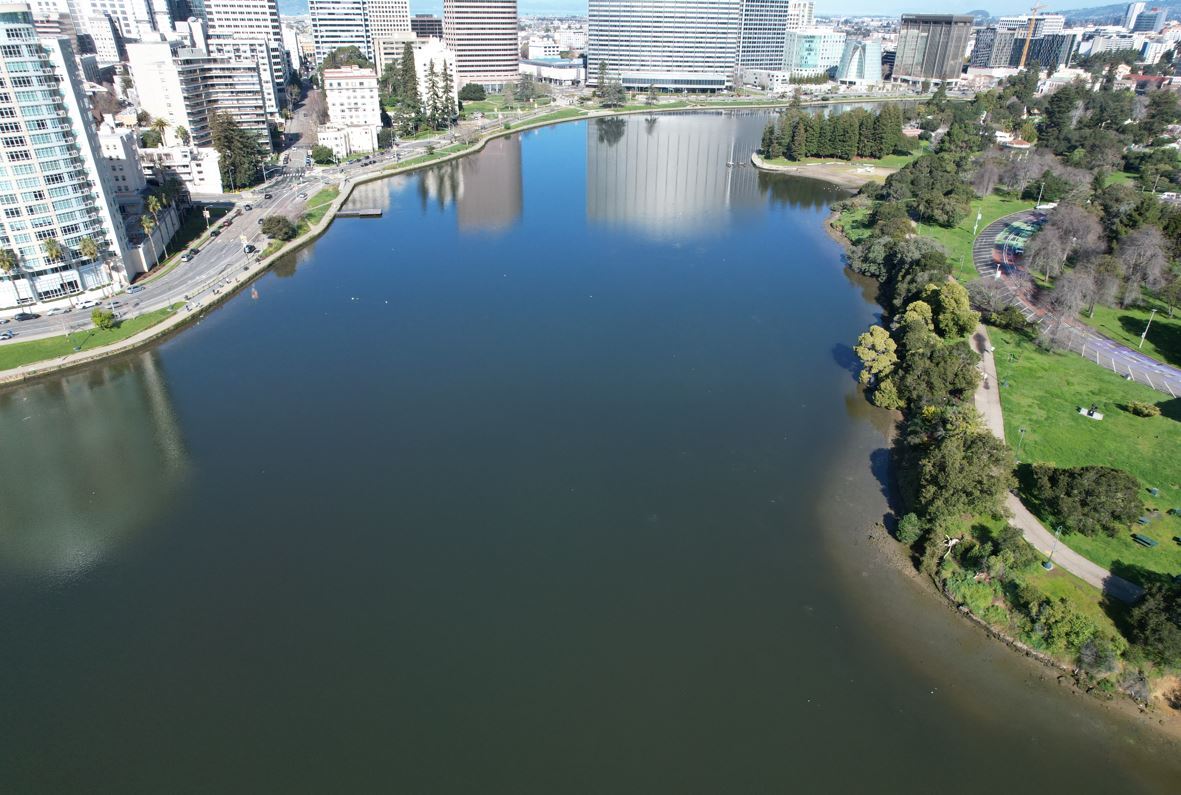The City has been closely monitoring water quality conditions at Lake Merritt following reports of red discoloration in the water on March 7, 2024. The City posted standard water quality Caution Advisory signage at the Lake in response to the initial reports, as advised by the San Francisco Bay Regional Water Quality Control Board and other regulatory partners.
This afternoon, the California Office of Environmental Health Hazard Assessment (OEHHA), in consultation with the San Francisco Regional Water Board and the HAB-related Illness Workgroup, recommended removing the Caution Advisory signage from Lake Merritt.
OEHHA guidance notes that the red discoloration which was found to contain relatively low levels of the algae species associated with the regional red tide event August 2022, appears to have dissipated. Subsequent observations of very small and localized algal mats (patches of algae on the surface of the water or rocks) did not meet OEHHA criteria for triggering a Caution Advisory. Finally, recent laboratory results from water samples taken on March 7 did not indicate the presence of cyanobacteria: a kind of algae that sometimes produce toxins harmful to people, pets, and wildlife.
Visitors may resume regular activity at the Lake but are reminded that swimming in Lake Merritt is prohibited by OMC Section 9.08.090. The water is generally safe for occasional body contact and recreational activities such as rowing and boating, but is not recommended for swimming, which greatly increases the risk of ingesting water.
The City conducts continuous monitoring of dissolved oxygen (DO) and other water quality parameters at the Lake as part of the Lake Merritt Water Quality Management Pilot Project. The Pilot was initiated in January 2023 and is designed to address excessive algae growth and low DO levels that can be harmful to fish and other aquatic life. An aeration fountain and an oxygenation device were installed in the Lake last year to help maintain an oxygenated refuge for aquatic life though naturally occurring fluctuations in DO levels. The algae observed last week has had no impact on DO levels, which remain in a healthy range.
We can all play a part in keeping the Lake safer for everyone. Property owners can avoid over-irrigation of landscapes (such as overwatering lawns) to prevent excess nutrients from entering waterways. Lake visitors should be sure to properly dispose of trash, especially food and food containers, which may contribute nutrients to the Lake that feed harmful algal blooms.
State of California information about harmful algae blooms is available online at the State's My Water Quality web page. This site includes a Harmful Algal Bloom (HAB) Incident Reports Map where community members can learn about nearby bloom reports, and guidance on how to identify a HAB.
